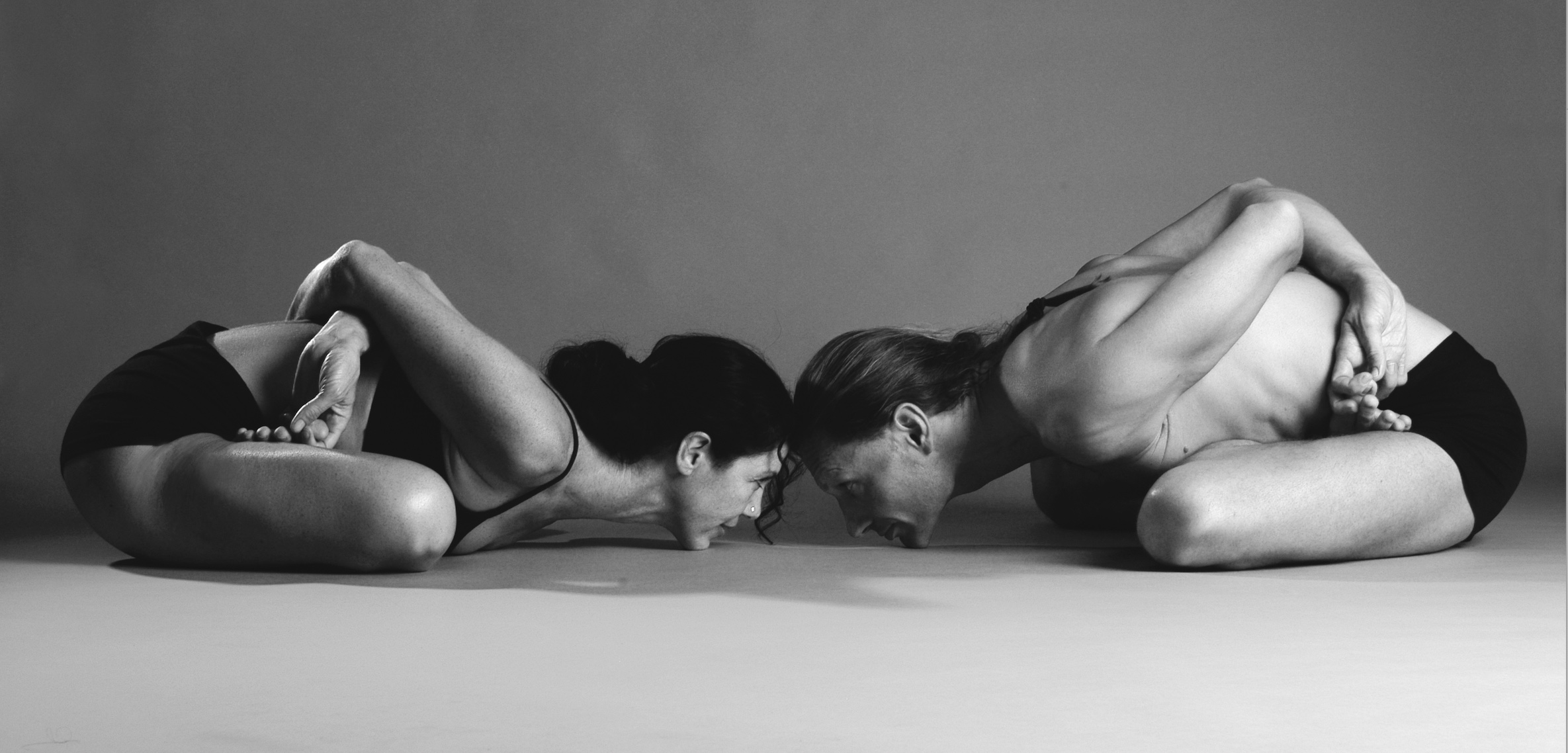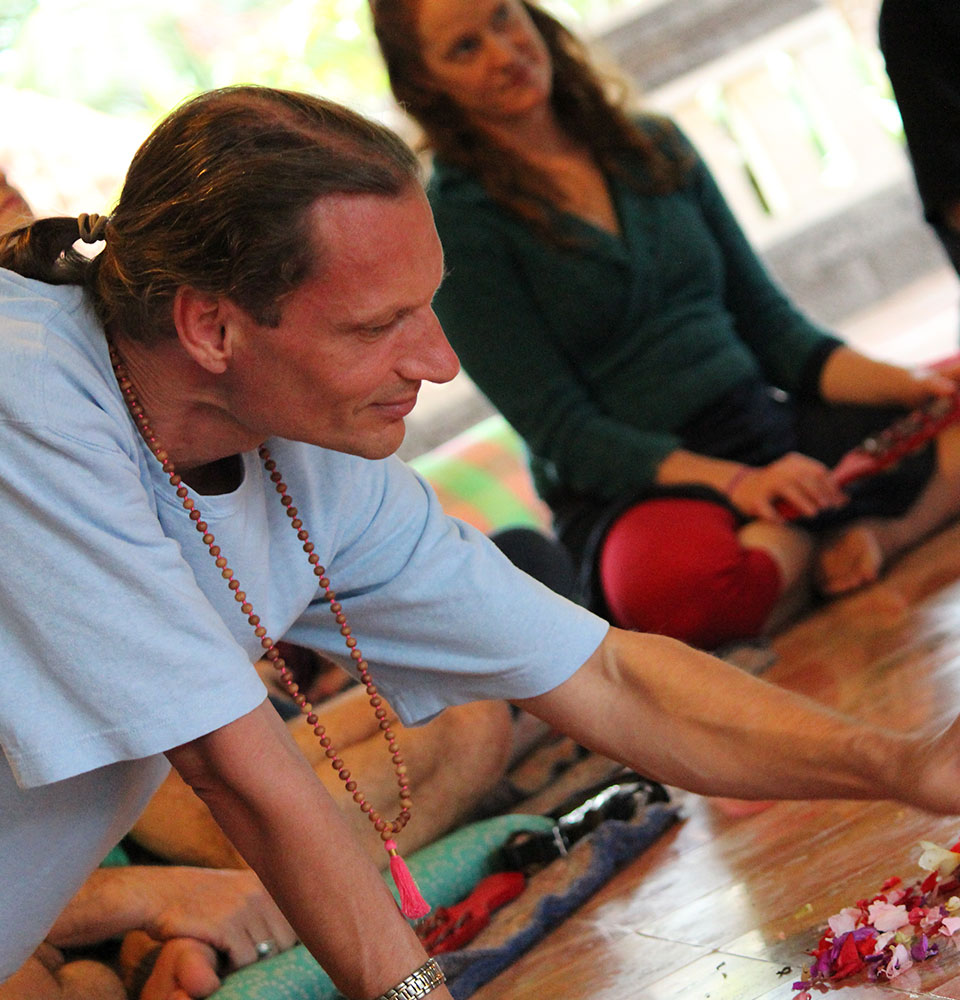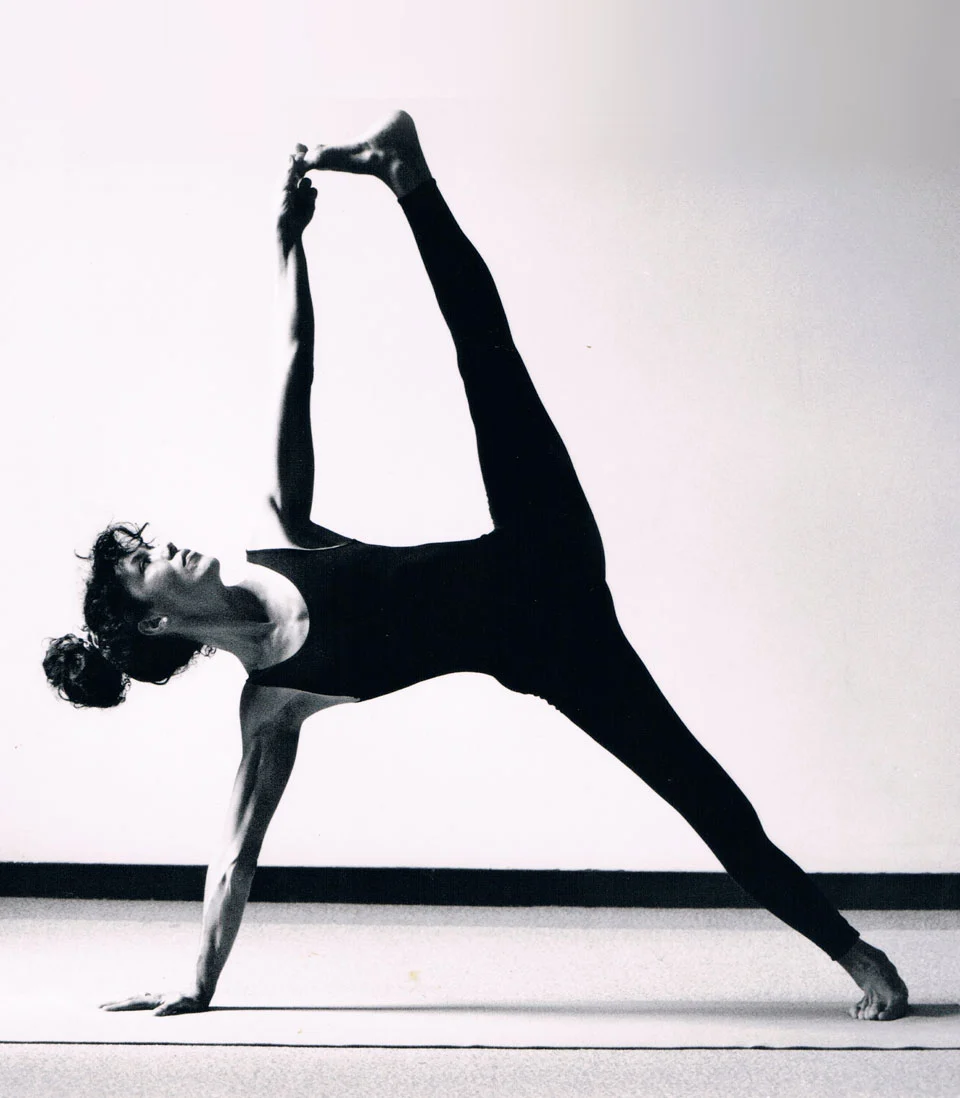Gregor Maehle & Monica Gauci
September 7-12, 2024

Weekend Workshop – Gregor Maehle
Saturday 7:
8h00 – 10h30 Guided Ashtanga Practice
11h30 – 13h00 Bhakti Yoga – Yoga of Love
13h00 – 13h30 Break
13h30- 15h30 Karma Yoga – How to find your life’s divine purpose
Sunday 8:
9h00-11h30 The Breath of Yoga – Pranayama & Kriya
11h30 – 12h30h Break
12h30 – 15h00 Tantric Meditation
Price: 300 CHF
Mysore Practice – Gregor Maehle & Monica Gauci
Monday 9 – Thursday 12 6h30 – 9h00
Price: 160 CHF
SUITABLE FOR ALL THOSE SEEKING TO RAISE COLLECTIVE CONSCIOUSNESS.
* No refund or cancelation after booking
* Taught exclusively in English
Bank info:
Delara Tiv
Rue du College 19,
Vevey 1800
CH89 0025 5255 1144 4240 Y

Gregor Maehle began his practice of Raja Yoga in 1978 and added Hatha Yoga a few years later. In the mid-1980s he commenced annual travels to India, where he studied with various yogic and tantric masters, traditional Indian sadhus and ascetics. After practising with BKS Iyengar he spent fourteen months in Mysuru, and in 1997 was authorised to teach Ashtanga Yoga by K. Pattabhi Jois*. In India Gregor also received eight months of mostly one-on-one instruction in scripture and the higher limbs of Yoga through B.N.S. Iyengar, a student of T. Krishnamacharya. He also studied Sanskrit under Professor Narayanachar and Dr Chandrasekhar. He lived for several years as a recluse, studying Sanskrit and yogic scripture and practising yogic techniques.
Gregor’s internationally acclaimed textbook series have sold more than 100,000 copies worldwide and have been translated into eight foreign languages.
He has been invited to many countries to teach and has contributed to and been interviewed by numerous yoga magazines. On his blog page chintamaniyoga.com/blog/ you will find over 300 articles, videos and podcasts on all aspects of yoga, which he has authored together with his wife Monica. To learn more about Gregor please click here

B Sc, B Chiro (Hons), Yoga Therapist
Monica Gauci began her practice of yoga in 1978, closely followed by a dedicated meditation practice. She practiced Hatha Yoga and then Iyengar Yoga for 13 years until she discovered Ashtanga Vinyasa Yoga in 1993. After multiple journeys to Mysuru, India in 1996 she was authorised to teach Ashtanga Vinyasa Yoga by K. Pattabhi Jois.
Since the age of 24, Monica has studied many different disciplines of the Healing Arts. In 2008 she graduated with 1st class honours as a Doctor of Chiropractic and received numerous awards for Academic Excellence.
To learn more about Monica please click here.

Class details:
Guided Asana Class
Here Gregor will analyse the many intricate anatomical details of the majority of the postures of the Primary Series, while maintaining as much pace as possible. The focus will be on breaking down the various phases of entering and exiting the postures into their constituents. Performing postures safely while understanding which anatomical actions will get us deep into the asanas will prevent unnecessary energy expenditure. Through inducing precision this format also achieves that conditioning and emotions lodged in bodily tissue are released, preparing us for the higher limbs of pranayama and meditation.
Pranayama and Kriya
Imagine how great it would be to have a switch that, when operated, would enable you to consciously choose between your right and left brain hemispheres, intuitive and analytical intelligence, sympathetic and parasympathetic nervous systems, fight/flight reflex and rest/relaxation, and between the male and female, solar and lunar, aspects of your psyche. How great it would be if, when required, you could switch from being compassionate to doggedly determined. Or from charged with energy to completely relaxed within a few minutes. Or from extrovert (physically present, expressive and outgoing) to introvert (reflective and absorbing) within a short time. This switch does in fact exist and it is not at all hidden. It is the prominently protruding olfactory orifice right in the middle of your face: your nose.
Pranayama includes some of the most neglected but yet most powerful methods of yoga. Pranayama is the vital link that connects asana to meditation without which the combined benefit of both cannot be harvested. Learn how to use pranayama to harmonize the doshas (humors of the body) and thus attain a state of health and balance as well as how to still the mind, enabling spiritual insight. The kriyas are predominantly methods of purification of the body. They support the work of postures and are especially important for people who live in large cities. They aid in removing contamination from chemical, environmental, electrical, biological
and electromagnetic sources.
Tantric Meditations
This workshop is based on meditation techniques from an ancient text called the Vijnana Bhairava Tantra. This text came down through Kashmir Shaivism and contains 112 dharanas, what we today would call meditation techniques. Many of today’s popular meditation techniques were already introduced in the Vijnana Bhairava. Most of these tantric meditations are much simpler than yogic meditation and require less effort. There are also many different techniques to choose from. Here is a sophisticated approach that offers a great variety in case a particular technique doesn’t work for a student. This makes this system very adaptable to individual needs and preferences. Of particular interest are those techniques that deal with realizing ones true nature as consciousness. Consciousness in this context is that what is conscious, rather than that what we are conscious of (i.e. the contents of the mind). Realizing this leads to great inner peace and stillness. In the tradition of the Indian mystic Shri Aurobindo, however, this state is not the end of one’s spiritual evolution but the beginning of its most fruitful phase. It makes us receptive and open to download higher forms of spiritual insight through which we become transformed into tools of universal consciousness.
Bhakti – Yoga of Love
Bhakti is the yoga of divine love. In this workshop we will establish a definition of what the Divine is and what it is not. The Divine will be shown to promote intensity, creativity, novelty and co-creation with all life forms. We will also come to understand that the Divine is not a solid state but an ongoing process. We will analyse various historical Bhakti movements and will attempt to learn from their strengths and weaknesses. We will also look at the psychological advantages and obstacles to practising a yoga of love. Finally a non-sectarian, 21 st century approach to bhakti will be
presented, including practices designed to improve our quality of life, happiness, contentment and the knowledge that each of us matters to the Divine. An important part of that is to learn to see the Divine in all those we struggle to understand. The main source for Bhakti is the Bhagavad Gita, the Divine Song. The Gita itself presents a sophisticated mix of Jnana Yoga (yoga of knowledge), Bhakti Yoga (yoga of devotion) and
Karma Yoga (yoga of action). We will learn to chant some of the important stanzas and then analyse the practical lessons for life that the Gita imparts.
The Raja Yoga of Patanjali is also described in the Gita. Whereas in the Yoga Sutra the focus is on Raja Yoga and Bhakti (here called Ishvara pranidhana) takes up only about 5% of the stanzas, in the Gita Ishvara pranidhana takes centre stage. In the Gita Ishvara is called Purusha Uttama (Purushottama), the Supreme Being. The definition of the Purushottama very much interdigitates with the description of Ishvara in the Sutra but friends of the Sutra can find a lot more detail in the Gita to increase their understanding of the Divine. To facilitate this further Gregor will not only analyse and juxtapose viewpoints from the ancient commentators on the Gita such as Shankaracharya and Ramanujacharya but will also integrate the insights of recent luminaries such as Shri Ramakrishna and Shri Aurobindo.
Karma Yoga – How to Find Your Life’s Divine Purpose
Do you remember a time when you knew that your life would be amazing and that you would live to make a meaningful contribution to life on Earth and the life of others? And then what happened? Somehow our education and the process of enculturation cut us off from this sacred knowledge and élan vital. We became cynics and “realists”. Since time immemorial human societies were organized around the idea that the life of the
individual and of society have divine purpose. This workshop traces this knowledge to indigenous cultures, to the Bhagavad Gita, the Bible and the Yoga Sutra. Our loss of this knowledge is what has led to our environmental destruction and the 6 th mass extinction of life as well as the current epidemic of mental disorders.
This workshop not only shows how we lost the knowledge that all life is sacred and purposeful, it also introduces layers of technique to lead us back to finding and gradually implementing our life’s divine purpose.
Also covered are:
- Our life’s divine purpose in relation to quantum mechanics, astrophysics and evolutionary psychology
- Connection to bio-symbiosis, brain development and homeostasis
- The practice & psychology of finding one’s life’s divine purpose
- Overcoming obstacles
- How do we know it’s the right voice?
- Daily cleansing regime of the subconscious mind
- Being in the zone and absence of internal dialogue
- Importance of forgiveness, gratitude, acceptance and surrender
- How to embody your life’s divine purpose
- Humanities collective divine purpose